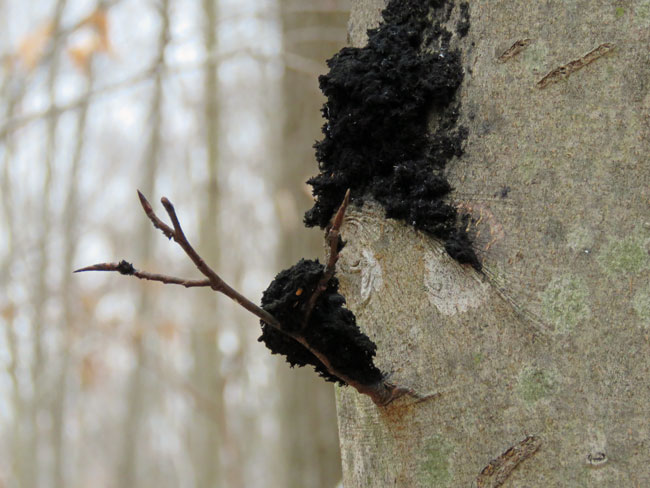
Every day the North Carolina Botanical Garden Facebook page adds a post about something currently happening or growing in their gardens. Recently they posted a picture of a square seed capsule with the following information:
This funky plant grows in wet areas like ditches and freshwater tidal marshes. Its small yellow flowers drop their petals quickly, sometimes after just a single day, but we get to enjoy the beautiful seed capsules through the fall and winter. You’ll find seedbox alongside the goldenrods and ferns in our Coastal Plain Habitat.

So I decided we would hunt for this interesting looking seed capsule. We had no idea what size it would be but we headed for the Coastal Plain Habitat and searched and searched with no luck.

We then looked for identification signs for goldenrods and ferns, found some and located what looked like a promising patch of dried up vegetation near them.


Then Tim googled seedbox and found out that these seed capsules were very small, about 1/8 in. cubed. So my eyes kept inspecting the area ever more thoroughly…

We did see lots of pretty dry plants…

And then, at last, I found some!!! In the picture below the seedbox capsules are tangled up with another kind of plant.

Tim used his walking stick to move one stem of the capsules away and turned them so we could see the tops of them. Cute little cubes. I imagine there is a seed in each box. Seedbox! So tiny! (picture below) Our persistence paid off and I doubt we would ever have noticed these little gems if we weren’t looking for them.

aka square-pod water-primrose
After that bit of excitement a hermit thrush flew by us and landed in the bushes. It stayed put for quite a while and I thoroughly enjoyed the photo op.



The botanical garden also has a bird blind with bird feeders in the Children’s Wonder Garden so we walked over there, spotting some cardinals and lovely trees along the way.



(reminds me of the one I had outside my kitchen window in Connecticut)

And lo and behold, there on the feeder was a new life bird for me, a Carolina Chickadee!!! I couldn’t zoom in fast enough before it left but I was happy to spot one. 🙂

John James Audubon named this bird while he was in South Carolina. The curious, intelligent Carolina Chickadee looks very much like a Black-capped Chickadee, with a black cap, black bib, gray wings and back, and whitish underside. Carolina and Black-capped chickadees hybridize in the area where their ranges overlap, but the two species probably diverged more than 2.5 million years ago.
~ All About Birds website

A Carolina wren kept us amused for quite a while with his antics on the feeder.

There was much to see in the winter garden, many delights for the eyes. It was only 32°F (0°C) when we left the house so I had put on my thermal leggings and wool hat from Norway and managed not to get too cold.

The hunt for seedbox was good stimulation, exercising our brains along with our bodies.

























































































































































